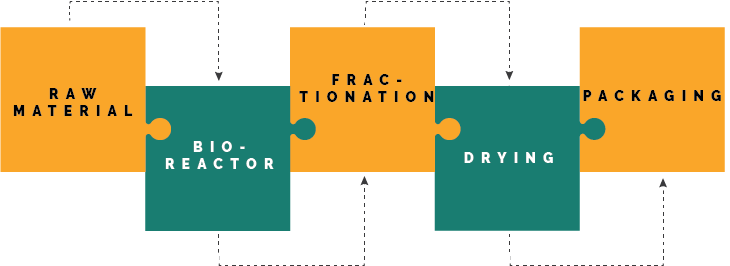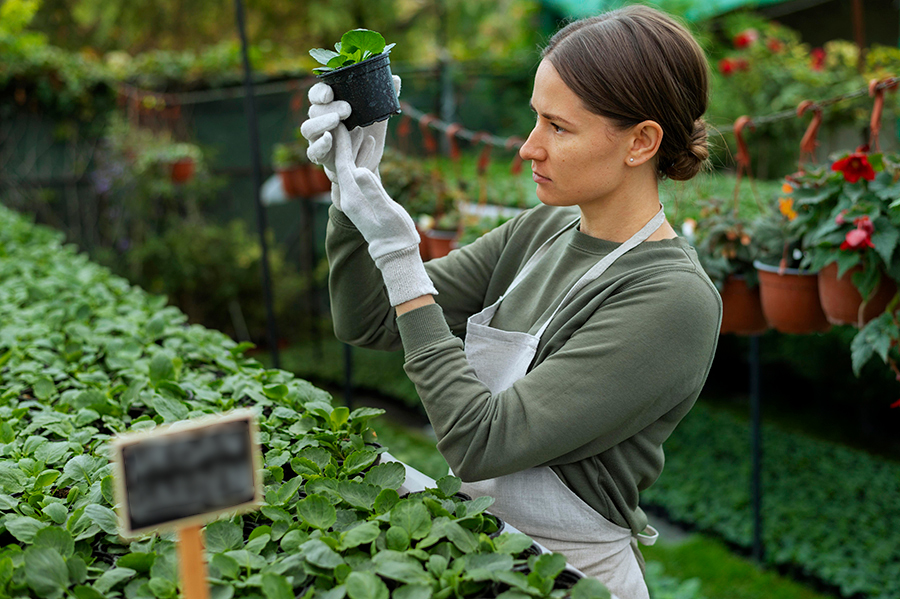DESCRIPTION:
Definition of biopesticide
According to the FAO, biological pest control products, or biopesticides, like chemically synthesized pesticides, are substances or mixtures used to repel, destroy or control pests. Indeed, biopesticides are complementary technologies to chemical pesticides and are part, together with them, of the control toolbox that can be used in an integrated pest management scheme.
From the point of view of their composition, biological pesticides are natural organisms or substances derived from natural materials, including animals, plants, bacteria, fungi and some minerals, their genes or their metabolites, or genetic material added to the plant. Apart from biological pesticides, there are macroorganisms that are also used to control pests and are commonly referred to as biological controllers. The latter include insects, mites and nematodes that act as predators of organisms considered pests.
Classes of Biopesticides

You may be interested in: How to adapt agriculture to the increasingly evident climate change
The main category is microbial pesticides, which are microorganisms, mainly entomopathogenic, although there are also bioherbicides and biofungicides.
There are also biochemical pesticides, which are naturally occurring substances that control pests through non-toxic mechanisms. They are mainly pheromones, although they also include other semiochemicals, plant extracts or botanical pesticides, and insect growth regulators.
Finally, biopesticides include those substances that are produced in genetically modified plants to express proteins that protect them from pests.
How biological pesticides are produced

Noticeably, given the variety of source material and product classes, the methods for producing biopesticides also vary. In general, it can be said, in a simplified way, that biological pesticides start with material of organic or inorganic origin with which a bioreactor is fed, which, through different chemical processes that include cultivation, oxidation, nitration, condensation and other types of reactions contribute to the generation of critical mass of product. The latter must then be separated through a fractionation system in which the obtained mixture is divided into smaller quantities of different composition, from which a purified product is obtained. The product is then dried to separate not only water, but also other solvents through different evaporation methods. This product may or may not undergo additional purification processes before being formulated and packaged.
Advantages and Disadvantages of Biopesticides

Like other pest control methods, when used correctly, biopesticides help increase crop productivity. Although some people propose that chemical pesticides can be replaced by biopesticides, there are still not enough biopesticides to completely eliminate the use of chemical pesticides, but rather they should be used as complementary tools in an integrated pest management scheme. Biopesticides are typically more expensive than chemical ones, and are less available in many countries where regulations do not yet promote their registration. Additional trials should also be conducted by farmers to determine the best application strategies appropriate for each crop, pest, and agroecosystem, including the identification of the correct life cycle dynamics and pressure on the pest, both of crops, pests and pesticides.
An important advantage for farmers is that when they combine the use of chemical and biological pesticides, they can reduce the presence of pesticide residues in the products they market, thus overcoming barriers to entry into certain markets.
Regulation of biopesticides
Contrary to current practice in many countries, biopesticides do not have to follow the same registration protocols as those for conventional chemical pesticides. Given its lower risk profile, but also the particular use needs of each biological product, its registration requires different types of trials to demonstrate its effectiveness and safety. Likewise, contrary to what some people suggest, biopesticides are not necessarily harmless and, therefore, requirements that include a risk assessment must be met before being taken into the field. CropLife Latin America has a regulatory framework that is available to authorities in the region to support their efforts in the preparation of new registration regulations that promote the adoption of the use of biopesticides by farmers.
You may be interested in: CuidAgro and the digitalization of agriculture
Investment in Biological Development
According to the study "Time and Cost of a New Agrochemical: Research, Development (R&D) and Registration," conducted by Agbioinvestor in February 2024, R&D investment in new biological products increased by 62.5% between 2008 and 2019.


















